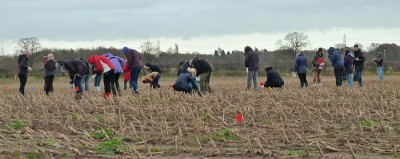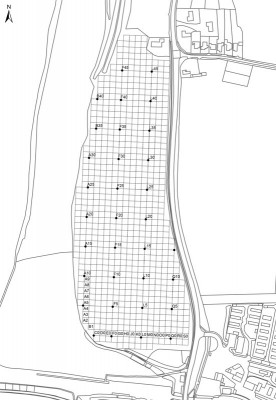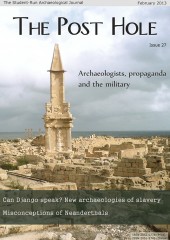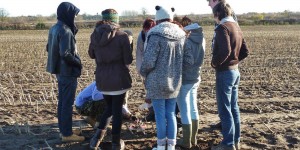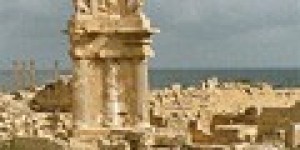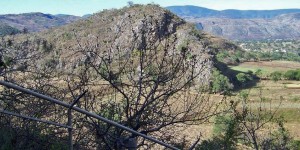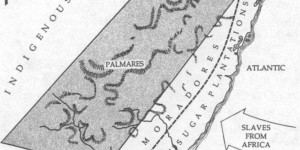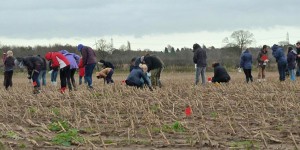Vikings at Torksey, Julian D. Richards
Torksey, situated in the county of Lincolnshire, England, is first referenced in the Anglo-Saxon Chronicle entry for the winter of AD 872-3, which records that the Viking Great Army, fresh from campaigning in Northumbria, took winter quarters on Turc’s Island, later to become known as Torksey.
In collaboration with the Department of Archaeology at the University of Sheffield, and with additional funding from the British Academy and the Society of Antiquaries, the Department of Archaeology at the University of York is currently undertaking a 3-year reconnaissance programme at Torksey, adjacent to the River Trent. The work is being directed by Julian Richards in York and Dawn Hadley in Sheffield, with additional collaboration from the Portable Antiquities Scheme (PAS), the British Museum, and the Fitzwilliam Museum in Cambridge.
The site of the Viking winter camp has been identified by metal detectorists as one of the richest sources in England of Anglo-Saxon coins and scrap jewellery, as well as Arabic coins and Viking bullion silver and gold. We are working with the detectorists to plot their finds, but we are also using other techniques, including fieldwalking, geophysics, auger surveys, and test pitting, to establish the extent of the site, the nature of the activities represented, and the quality of preservation.
In 2011 fieldwalking by York undergraduates north of the modern village of Torksey identified a concentration of Roman pottery in the middle of the winter camp, coinciding with an enclosure observed in the magnetometer plot. This must be a Romano-British farmstead, which occupied the high ground overlooking the Trent long before the establishment of the winter camp.
In 2012 we turned our attention to the land immediately to the south of the modern village, the Castle Field, which overlooks the Trent and lies adjacent to the ruins of Torksey Castle, known to go back to Tudor times, but possibly earlier. We already know that in the late 9th and early 10th centuries Torksey developed into a flourishing Anglo-Saxon town or burh, with its own mint, and a major pottery industry.
Torksey ware is one of the earliest forms of wheel thrown pottery to be manufactured in England, and it is believed that the technology was introduced to this country from France by potters who were travelling with ‘the baggage train’ of the Viking army. A number of kilns had already been excavated in the Castle Field; some in the 1950s by Maurice Barley, and others more recently by Pre-Construct Archaeology in advance of a housing development just beyond the northern perimeter.
Barley also reported that he observed some human burials, and skeletons have also been reported washing out of the river bank. The field is a Scheduled Ancient Monument, but has never been systematically surveyed or field-walked. Our aim in November 2012, therefore, was to plot the distribution of finds in the Castle Field, and particularly to see if we could identify different kiln products and Torksey ware variations in different parts of the site, as well as to determine the focus of the cemetery. The finds are still being processed, but the early results are very encouraging.
Fieldwalking adventure of a first year archaeology student, Daria Wiercigroch
One of the best things about being a student at the University of York is the possibility of getting involved in many interesting projects. Last November, archaeology students from my year had a chance to get a taste of fieldwalking. We were working in Torksey in Lincolnshire for two days, experiencing the work of an archaeologist in the flesh. With wonderful expectations of things to come, we arrived one early morning, half asleep, on the muddy field in Torksey. With the wind blowing furiously; I think most of us had realised by this point that textbooks fail to deliver the whole truth about these experiences.
Students were split into groups and asked to lay out grids in the field. We found ourselves with tapes and flags to measure the grids to be walked. It felt a little like learning to swim by being thrown straight into the deep end, but it worked! Very quickly it all became clear and everyone got on with the task at hand, laying out grids and looking for artefacts. Our fear of the weather quickly faded and gave way to excitement.
Each group walked different grids, checking the top soil for finds. At the beginning it was hard to see anything except for stones. Looking more closely, however, soon revealed that what we initially believed to be stones were in fact pieces of ceramics, among other things. It amazed me how quickly it was possible to start recognising things of archaeological interest, which just a few hours before would have been omitted by most of us.
We found an abundance of ceramics, animal bones and quite a lot of flint. Other finds included clay pipes, ceramic building material (CBM), glass and some iron sludge. On the second day, human remains were also found along with even more domestic debris. The experience of fieldwalking gave us an opportunity to see what the work of an archaeologist really feels like, rather than relying only on what the textbooks are saying.
For me, it emphasised the importance of a few issues; first of all the pros and cons of working with the ploughed soil could be clearly observed. On the one hand, it provided an opportunity to gaze into the changing nature of the landscape over time, as many different artefacts from different time periods were found lying right next to each other! On the other hand, however, it was concerning to learn that the archaeology is being rapidly damaged by the agricultural activity.
The importance of accurate recording was also demonstrated. Had the grids been laid out inaccurately, or finds recorded in the wrong way, the fieldwalking would have been of no value. After walking each grid, groups assembled to identify, count and record gathered finds. This also highlighted the fact that some of us turned into hoarders of one particular type of find over the others, and generally each student was better at identifying and finding different kinds of artefacts.
What also became evident was that archaeologists themselves focus on certain time periods which interest them most about the site, and this could be observed in the recording process. Some materials such as CBM for example were recorded but then thrown back into the field. Other finds, which were more modern were not recorded at all, such as clay pigeons.
Understanding that focus in research is necessary to answer certain questions about the site, I found myself being drawn to all aspects of the site, both past and modern. Today, the site is used in certain seasons as a field, whilst in other seasons it is open for archaeologists to conduct research. It is also a very attractive place for practising shooting clay pigeons. Patterns of usage due to seasonality and different needs at different times would have applied to past peoples as well.
I found myself becoming very excited with each artefact I had successfully recognised and picked up. It was very interesting to see that in such a short space of time, practical work could teach many useful skills. With different kinds of assemblages emerging in different areas we could start sketching occupational patterns of the site in our minds. The fieldwalking experience reminded me of what is truly important. I could finally understand that weather does not matter to archaeologists when passion and focus are present at heart. We were later encouraged to participate in any community fieldwalking in the future. I would certainly love to do more as it seems like an amazing opportunity to get involved and help shape the archaeology of a local area.
Students from the first year also had an opportunity to get involved in post-excavation work; processing the very finds they picked up themselves. Personally, I found washing ceramics to be an interesting yet calming experience. It made me realise that Archaeology is a discipline like no other, and I was smiling to myself having realised that I am where I ought to be, doing what I really enjoy. I have made the right choice in studying Archaeology.
I feel that the experience of my first fieldwalking opportunity made my senses sharper, and I find myself now noticing things much more when I visit historically important places. Formerly a dreamer, with my head high in the skies, I now often find myself with my eyes examining the ground, getting excited by the evidence of the past beneath my feet... I guess I am still a dreamer.


